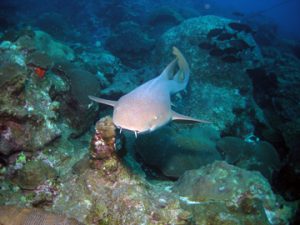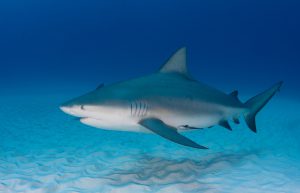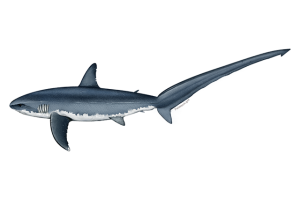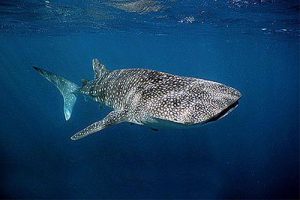This is not a word that most visitors to the beach want to hear. However, shark attacks are actually not that common and the risk is very low. People hear this every year on shark programs, but it does not seem to make them feel any better. Here is what the International Shark Attack File says (as of 2020)…
– Since the year 1580 there have been 3164 unprovoked shark attacks around the world.
Let that sink in for a moment… 3000 unprovoked attacks on humans in the last 440 years.
Now consider the number of car accident victims that have occurred in the last month within the United States. See what they are getting at? Let’s look at more…
– Of the 3164 reported unprovoked attacks (yes… these data only include what was reported) 1483 were from the United States… 47% of them. This may be due to the fact we are “water people”. The other top countries are Australia, South Africa, and Brazil, all “water people” as well.
– Of the 3164 reports 851 were from Florida (27%). This is the number of reported shark attacks in our state since the Spanish settled it. This comes out to 2 each year – though the data shows a sharp increase in attacks starting in the 1970s (most have occurred since then).
– Of the 3164 reports 25 were from the panhandle region (0.8%) and 7 from the Pensacola Bay area (0.2%).
Let that sink in for a moment. Seven reported attacks from the Pensacola Beach area since the time DeLuna landed here in 1559… 7.
And lets once again consider the number of vehicle accidents that will occur in the bay area today.
These numbers have been posted before. Yet people are still very worried when the hear sharks are in the Pensacola Beach region. When attacks occur, they are big news. The International Shark Attack File does give trends and suggestions on what to do. But as many say, sharks are the least of your worries when you are planning a day at the beach.
Now that we have said all of that, they are truly amazing animals.
They are fish but differ in that their skeletons lack hard calcified bone – they are cartilaginous. There are 25 species in 9 different families in the Gulf of Mexico. Many are completely harmless – 13 of the 25 have been reported to have had unprovoked attacks somewhere around the world – the white, tiger, and bull sharks leading the way. Several rarely come close to shore.
Sharks lack a swim bladder and thus cannot “float” in the water column the way your aquarium fish do. Some, like the nurse and angel sharks, rest on the bottom. Others, like the white and blue sharks, swim constantly to get water flowing over their gills.
Because of this, they are very streamlined with reduce scales. They actually have modified teeth for scales – called placoid scales. Their fins are angular and rigid (as are other open water fish) and some can swim quite fast – makos have been clocked at over 30 mph for short distances. Many have seen video of large white sharks exploding with a burst of speed on a sea lion and actually leaping out of the water with it.
Many species do lay eggs, but others keep the eggs within and give live birth after they hatch. One species, the sand tiger, produce four embryos within the mother. The first to hatch consumes the other three!
The teeth of sharks are famous. Rows of them, some pointed, some are serrated, all are designed to cut and swallow. The tiger shark has a serrated tooth that is angled like a can opener. They can use this to “open” sea turtle shells – adding them to their rather large menu. They “shed” these frequently – placing a new sharp tooth where the dull old one was – and will go through tens of thousands of teeth in a lifetime.
The sensory system is one of the most amazing in the world. Tiny gelatinous cells along their sides, called the lateral line, detect pressure waves from great distances. Splashing, thrashing movements made by fish can be detected a mile away – and get their attention. As they approach the sound their sense of smell kicks in. It has been said that a shark can detect one drop of blood in thousands of gallons of water – and it is true. However, the sharks must be down current of the victim to detect it. Their eyes are much better than most think. They have “crystals” within their retina that act as mirrors reflecting light that enters. Imagine turning on a flashlight in a dark room. Now imagine doing this if the walls and ceiling were mirrors – you kind of understand how they can actually see pretty well even in the low light. That said, light does not travel well under water, so they rely on their other senses more. And as if that were not enough. They have small gelatinous cells around the head region that can detect small electric fields. When a shark bites, it must close its eyes and – as the fishermen say – “roll back” out of the head. At this point the shark is basically blind and cannot see the target it is trying to bite. However, if you move out of the way, the weak electric fields produced by your muscles in doing so can be detected by these cells and the shark knows where you are.
Cool – and scary at the same time. Let’s meet a few of these amazing fish in our area.
https://www.floridamuseum.ufl.edu/shark-attacks/
Nurse Shark
This is one of the bottom dwelling sharks that appear harmless – and they are – but if provoked, they will bite. They have less angular fins, or a brownish-bronze color, and really like structure – they are found on our reefs. They posses a “whisker-like” structure called a barbel. These are common on other bottom fish, like catfish, and possess chemo-sensory cells to detect prey buried in the sand. They are not as common here as they are in the Keys, but they have been seen. They can reach lengths of 14 feet.

Blacktip sharks are one of the smaller sharks in our area reaching a length of 59 inches. They are known to leap from the water. Photo: Florida Sea Grant
Blacktip – Spinner
These are grouped together because (a) they resemble each other, and (b) they are both common here.
They are both stream-lined in shape and have blacktips on their fins. Actually, spinner sharks have more fins tipped-black than the blacktip. The anal fin of the spinner is tipped black, but this is not the case for the blacktip. The spinner gets its name from the habit of leaping from the water and spinning very fast as it does so. Both are quite common in the Gulf and the bay. They reach about eight feet in length and unprovoked attacks are very rare.

The Scalloped Hammerhead is one of five species of hammerheads in the Gulf. It is commonly found in the bays. Photo: Florida Sea Grant
Hammerheads
This is a creepy group – check out the head. It is one that many people fear, and unprovoked attacks have occurred. The reader may not know that there are more than one kind – five species actually. They have a tall dorsal fin which sometimes extends above the water when swimming near the surface – the classic “shark is coming” look. Their heads are aerofoil shaped and there are several possible explanations for this. 1) It is more aerodynamic, making it easier for this ram-jetter to swim, using less energy to do so. 2) It is a battery of sensory cells. By swinging the head back and forth, as they do, it is an advanced radar searching for prey, possibly finding it before other sharks do. There are stories of hammerheads arriving first. 3) It is also believed they use their electric sense to detect buried prey – the shape making this easier to find and expose them. It could very well be that all of these could explain the shape.
Bull Shark
Since the film Jaws the world has turned its attention from solely the white shark – to the bull shark. As you can imagine, it is hard for a shark attack victim to tell you which species bit them – “I don’t know… it was a big gray thing chomping on my leg!” or “It was a great white!” because that is the only one many know. But studies sine the 1970s suggest that the bull shark is an aggressive species and may be responsible for a lot of attacks. Particularly in the estuaries and upper estuaries. Bull sharks are what we call euryhaline – they have tolerance for a wide range of salinities. This shark has been reported in low salinities of the upper estuaries and even into freshwater rivers. One report had them over 100 miles from the coast – they are certainly where the people are.
Thresher Sharks
These are bizarre looking sharks. Most sharks have what we call a heterocercal tail – different – different meaning the upper lobe of the forked tail is longer than the lower. But the threshers take this to the extreme – the tail can make up almost half of their body length, which can be 20 feet. It is believed that use this extremely long tail to herd and stun baitfish – their favorite prey. They prefer colder waters and records in the Gulf are not common. Those that exist suggest they live offshore and are rarely encountered near beaches. There are no unprovoked attacks reported from this shark.
Whale Shark
Amazing… heart stopping… what else can you say. Encounters with the largest fish on our planet are rare – but when they do happen you will never forget it – it will be one of the highlights of your life. As the name suggest – these are large sharks, with a mean length of 45 feet but some reporting in at 60 feet. They are easily recognized first by their size, but also their coloration. They are brownish color with beige or white spots in nice rows running across the dorsal side. They swim slowly filtering plankton from the sea – though will occasionally take in a fish. Some reports show them vertical in the water column moving up and down filtering from a school of plankton or tiny fish. They are rarely seen because they tend to dive deeper during the day with the plankton layer – then surfacing at night following the same plankton. They are, unfortunately, sometimes struck by boats while at the surface.
- Rattlesnakes on Our Barrier Islands; Part 3 – Envenomation - December 22, 2025
- St. Joe Red Tide Claiming Terrapins - December 15, 2025
- The 2025 Snake Watch Report for the Pensacola Bay Area - December 15, 2025




